- The rhizome and the unity of opposites in Gheorghe Virtosu painting
- Artist emotional expression through color

- 25 August '18
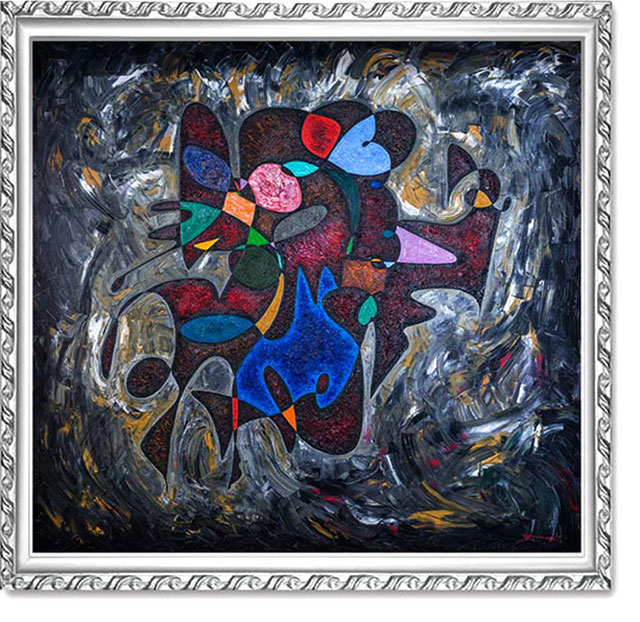

by Robert McIntosh
25 August '18The rhizome and the unity of opposites in Gheorghe Virtosu painting
In this article we shall discuss the play between opposites as the central theme to the work of Gheorghe Virtosu. We shall elaborate on the need of each other to exist as the structural concept contained in these opposites.
Rhizome concept
Gheorghe Virtosu 's work is a return to the aesthetic of form and color. It has an embedded rhizome or rhizomatic concept explored by the philosopher's Gilles Deleuze and Felix Guattari. The play of opposites is discernible from a number of the formal elements. At the outset, the primary opposites that provide a top-down way of describing or referencing these forms as the relationship between space and non-space. In Virtosu abstract painting, the contours that intersect the foreground, the background emit both a line of separation and a blended unity. The relationship between the two is not separate. In the sense that there is a 'signifier' and a 'signified' relationship. They are mutually determining but rather as a form of blended opposition. The blending or the rhizome dimension to this relationship is expressed in the movement of the background. It is an expression taken in itself that defines the boundaries and actions of the figures portrayed but also a movement that is likewise its own singular expression. There is a transfer of energy that happens in the play. The transfer between the gestures and the motion of the figures, but also the backgrounds with strong or bold textural layering.
 |
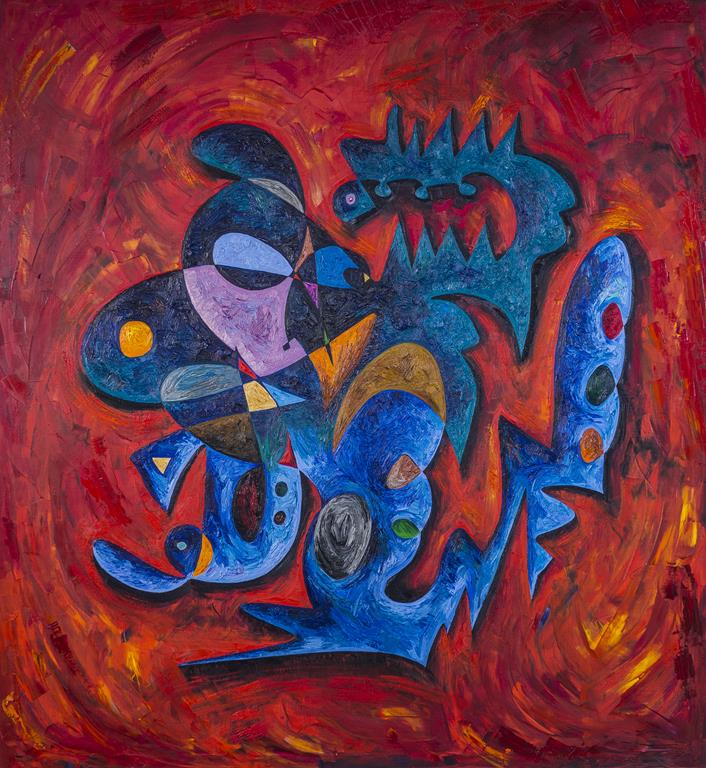 |
| The Century of the Duck (2016) | Yasser Arafat (2015) |
Consistent set of elements
The artist 's abstract paintings have a strong set of elements that are consistent with each other. This speaks to an important critical dimension of the work.
Contrasting hues
The contrasts and juxtapositions reflect both harmonious and disjunctive hues, but there is a balance or consistency. Saying that there is a tension with the use of the color hue rage that can in some ways be large and expressive, and in other instances within the same work, become conflicting and signifying an elevated danger. In terms of hue, there are warm and cool contrasts with complementary hues like red orange and then, red to violent. In terms of the cool hues, there are the ranges between blue and violet and then, blue with green. In turn, the prevalence and gestures or play between, create the contrasting hues.For example, the contrasting hues of warm orange against cool blue or conversely, a cool green against a warm red. These contrasts are consistent through the work, but are pronounced as an expression in Jehovah (2016), The Century of the Duck (2016), Yasser Arafat (2016), and especially in Ruqayyah bint Muhammad (2017), Fatimah bint Muhammad (2017), and Umm Kulthum bint Muhammad (2017). Taken together, these latter three paintings can be viewed as a Triptych and among most of his works, these are exemplary of the contrast in color hue. But, only in an immediate way.
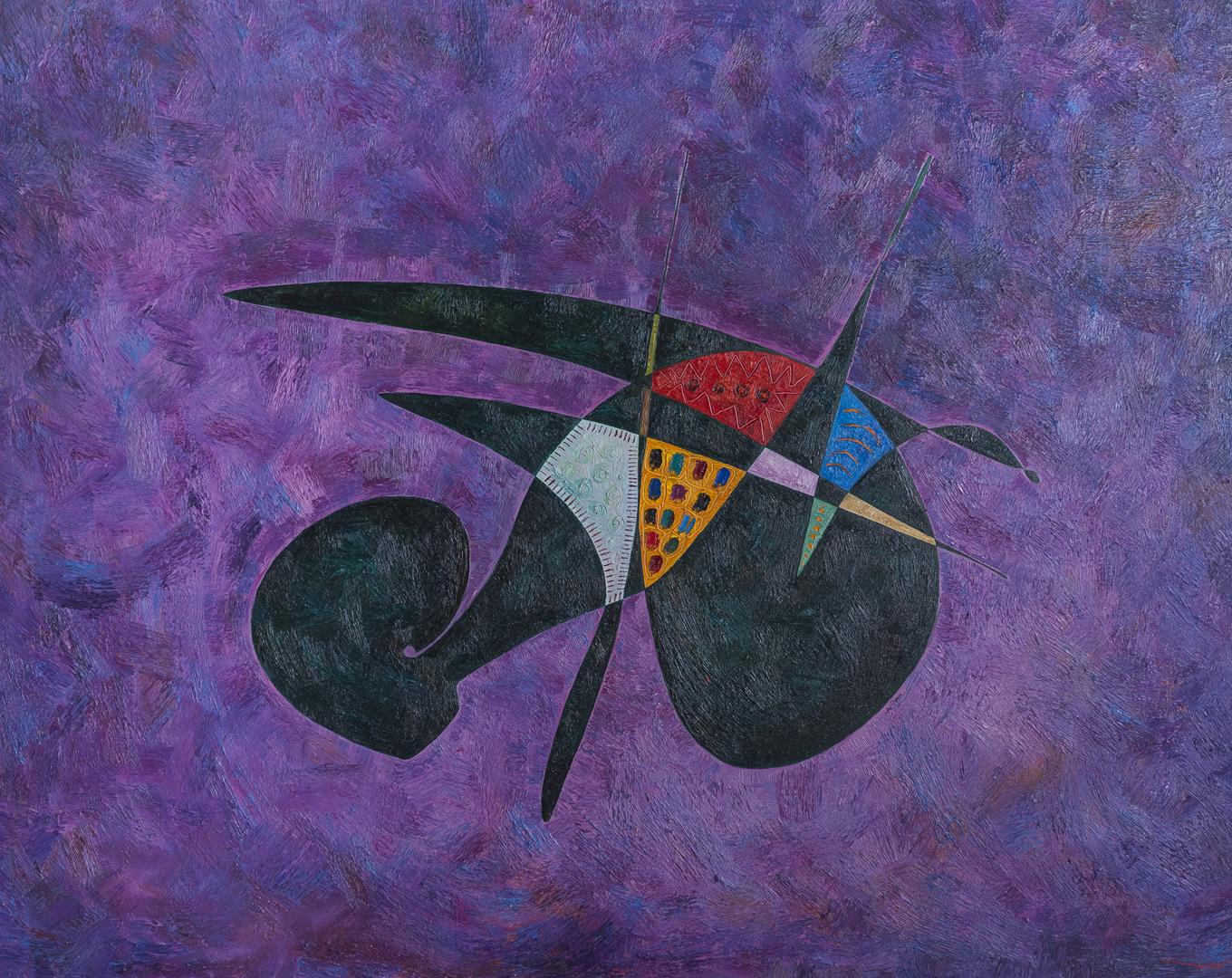 |
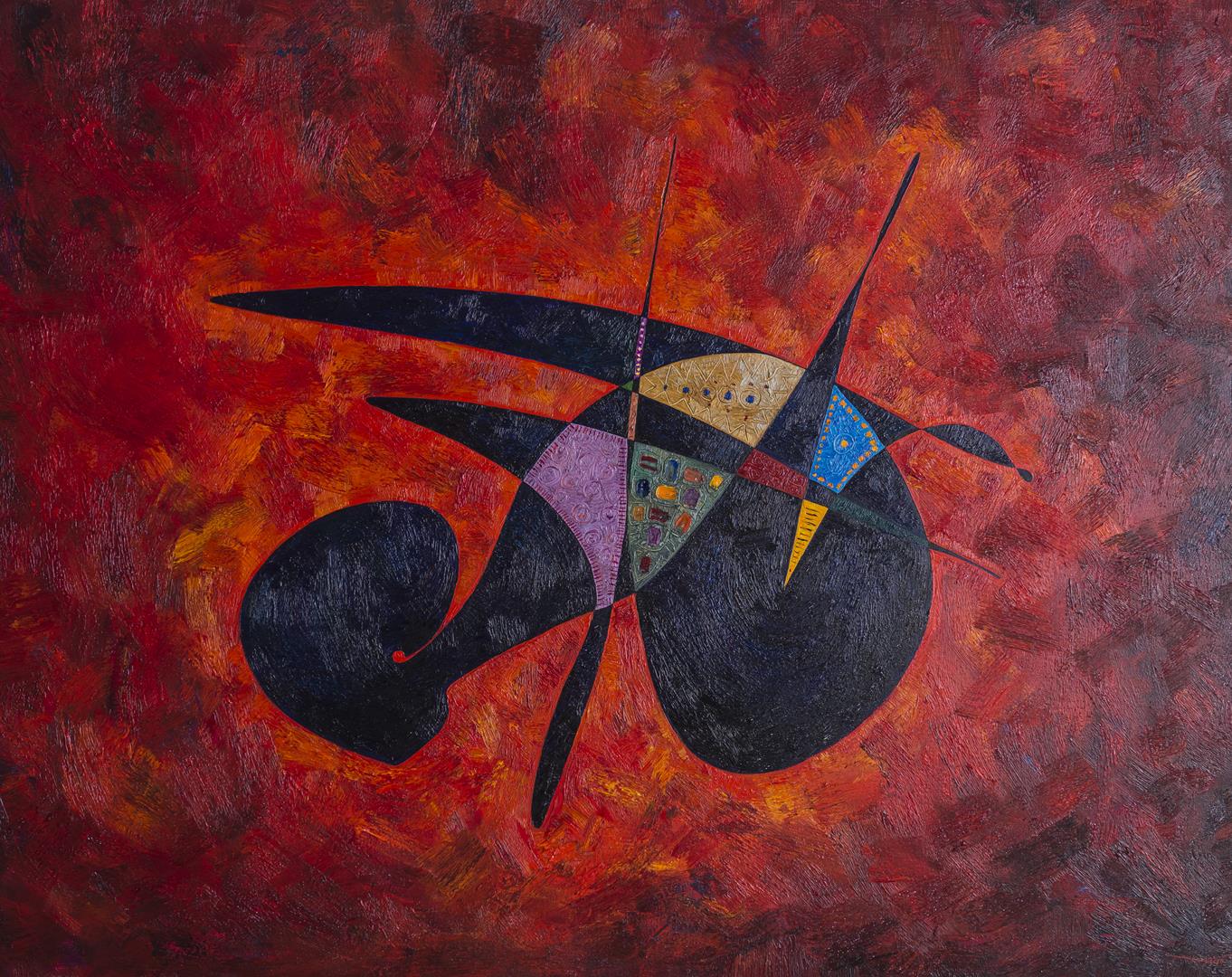 |
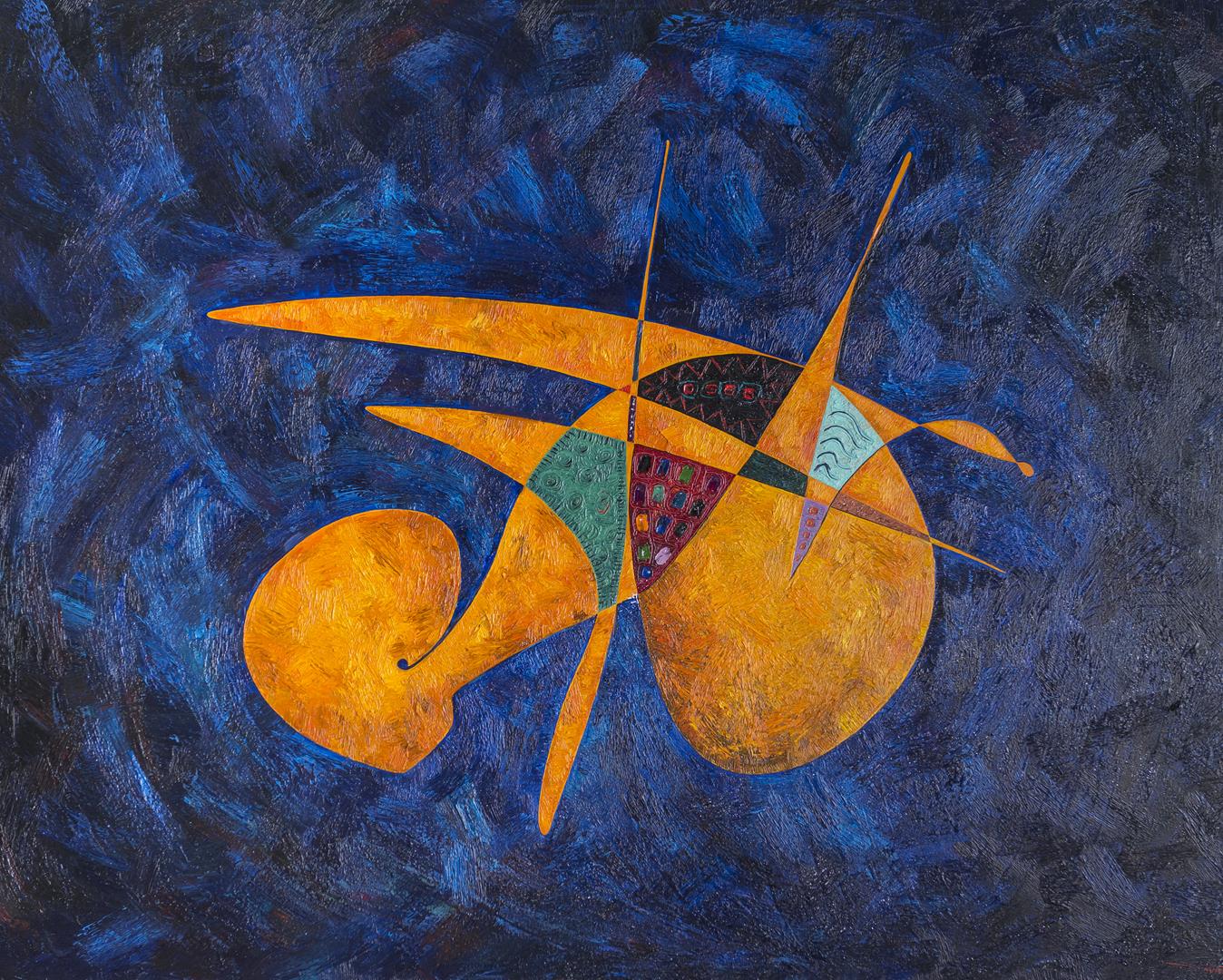 |
| Ruqayyah bint Muhammad (2017) | Fatimah bint Muhammad (2017) | Umm Kulthum bint Muhammad (2017) |
Tension
Virtosu's other work contains these elements but requires a more positive focused engagement. Or, just a little more meditative time looking. The contrasts in hue further define the contours and boundaries of the space surrounding the figures in Virtosu's work.
Consider the appropriate lack of resistance in the bounding space in Flying Man (2017), but then the darkness surrounding the optimistic colors of European Optimism (2017) or the Elements of World Power (2017).
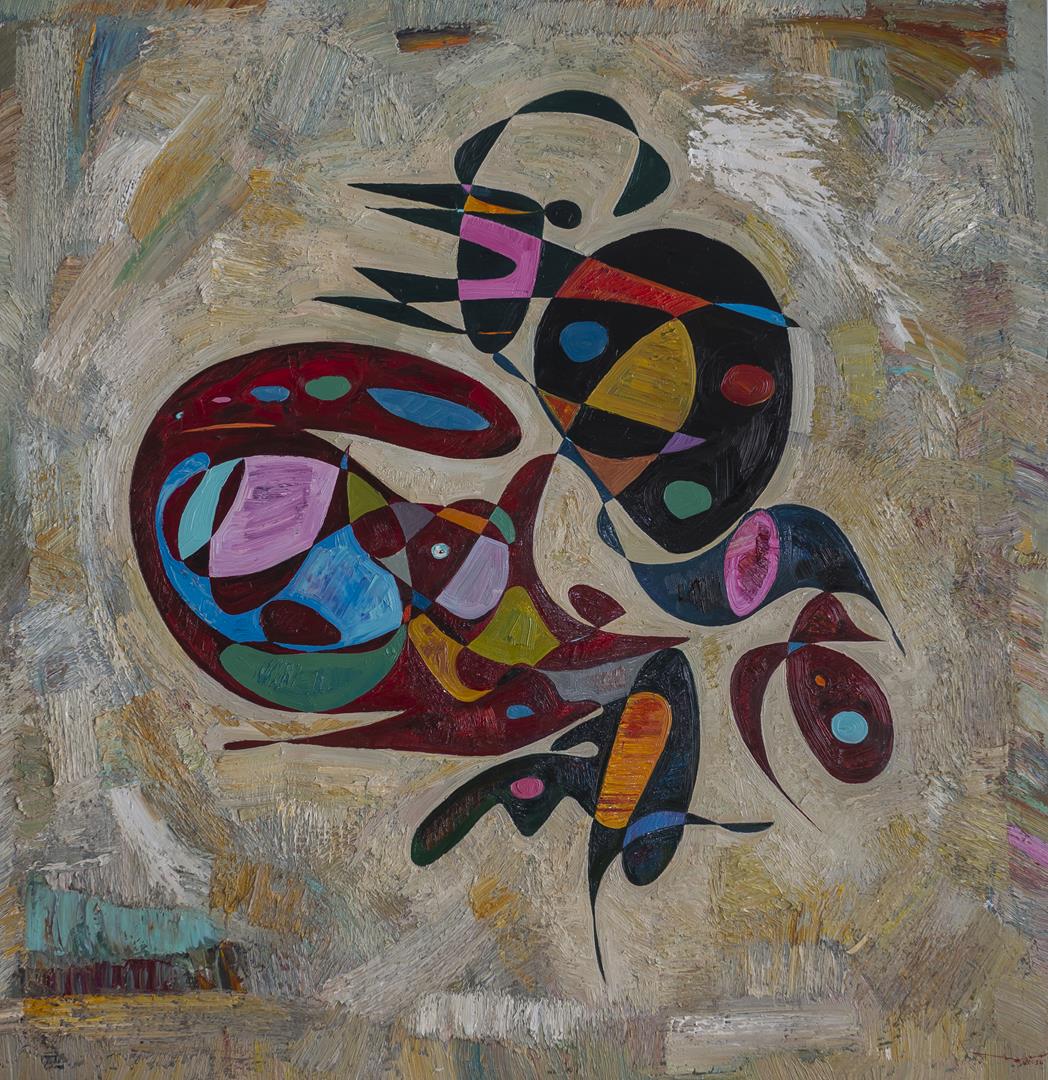 |
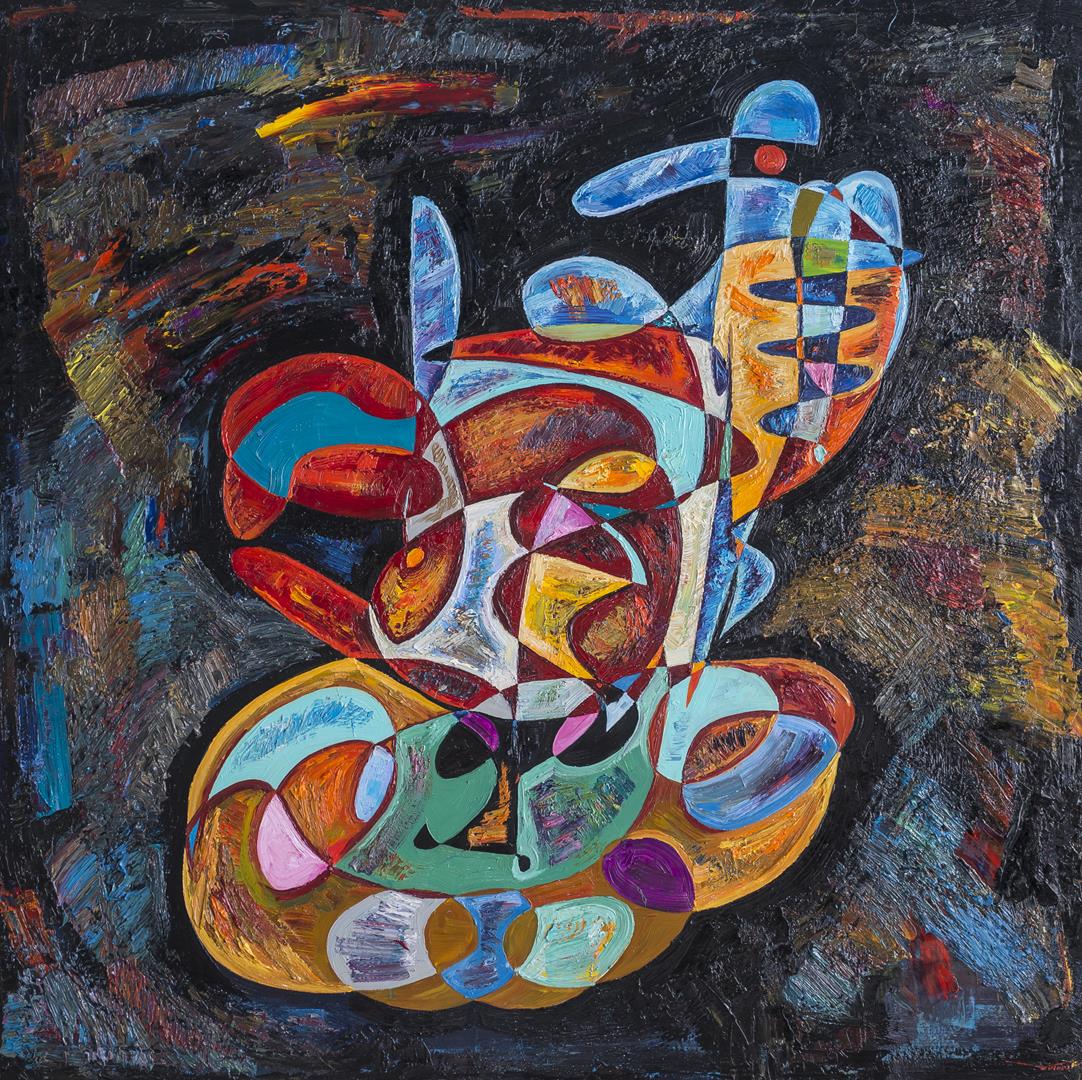 |
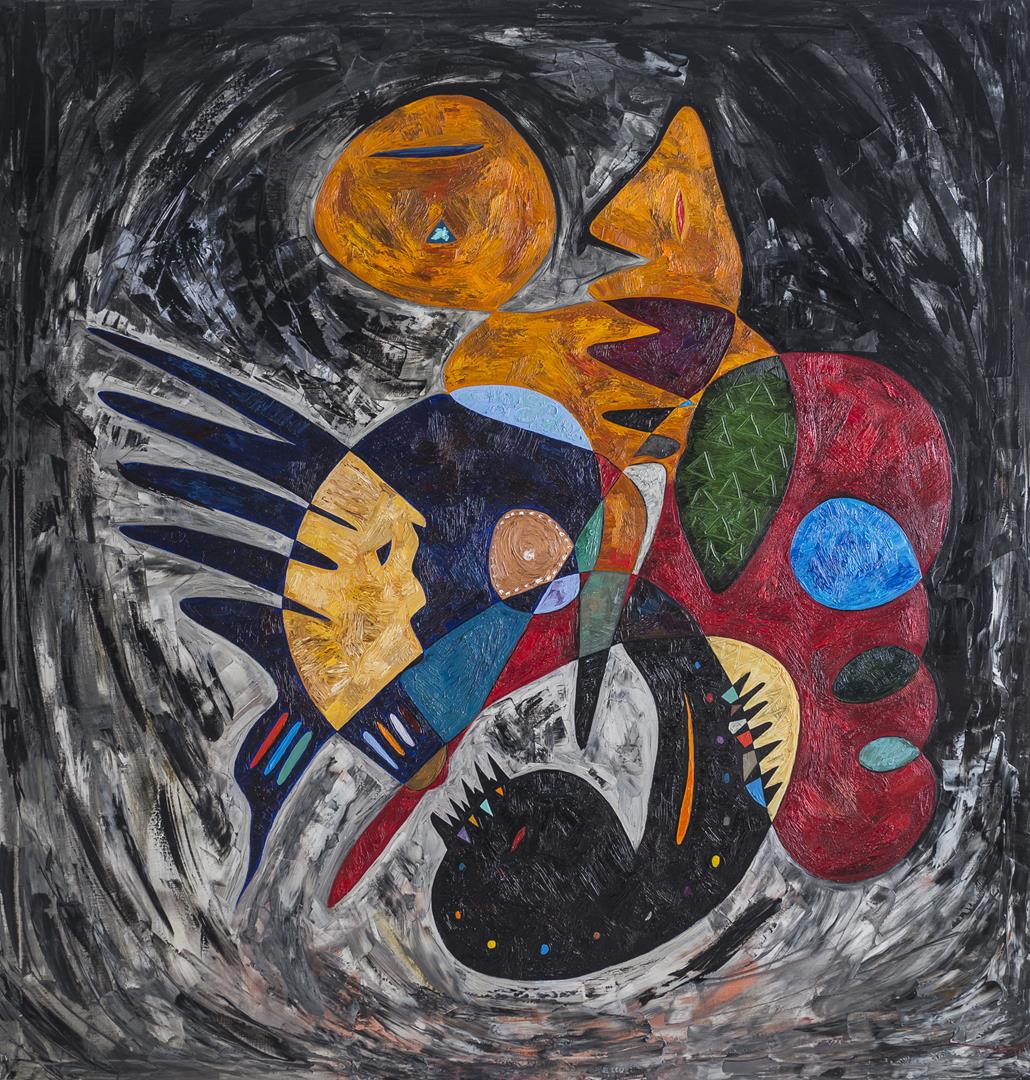 |
| Flying Man (2017) | European Optimism (2017) |
Tension is a relation between opposites or opposing directs, and in Virtosu's work, there is a marked pulling, straining between parts of the composition, but also a balance where sufficient resistance is maintaining the motion or movement of energy expressed by a figure in transition. It is these opposing and complementary forces that can be described in terms of Deleuze's rhizome. There is no ignoring the unity at the same time that it is defined by opposition.
Key elements
The play of space and non-space are key elements to understanding the rhizome or rhizomatic effect in Virtosu's abstract paintings. In basic two-dimension space, the concept at its most basic implies the distance between two distinct points on the surface.In Virtosu's painting, these distinct points are often implied as much as they are formal boundaries. His use of blend and texture within backgrounds that at first seem like uniform space, is subtle and deliberate. It creates the illusion of space or the illusion of disconnection.
The Unity
The opposites concept is embedded in the paintings itself. The rhizomatic aids in providing the form to Virtosu's painterly expression and the focus of this discussion is directed at understanding how the contrasts and unity of opposites create a necessary relationship between them. One cannot think about the statement of a warm color hue, without being drawn by the meaning of being generated through the contrast. Likewise, tension and balance are expressed through the blending of contours, but also the variables of resistance and release. There is a harmony between motion as the expression on the one hand, and the form and texture that structure it. The rhizome aids in a discussion of Virtosu 's art because it leaves the concept within the work.
His work is a unity of opposites, but one whose unity and balance are shifting, and shifting in both subtle and strongly articulated ways.

